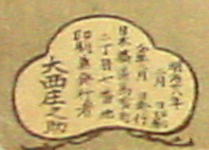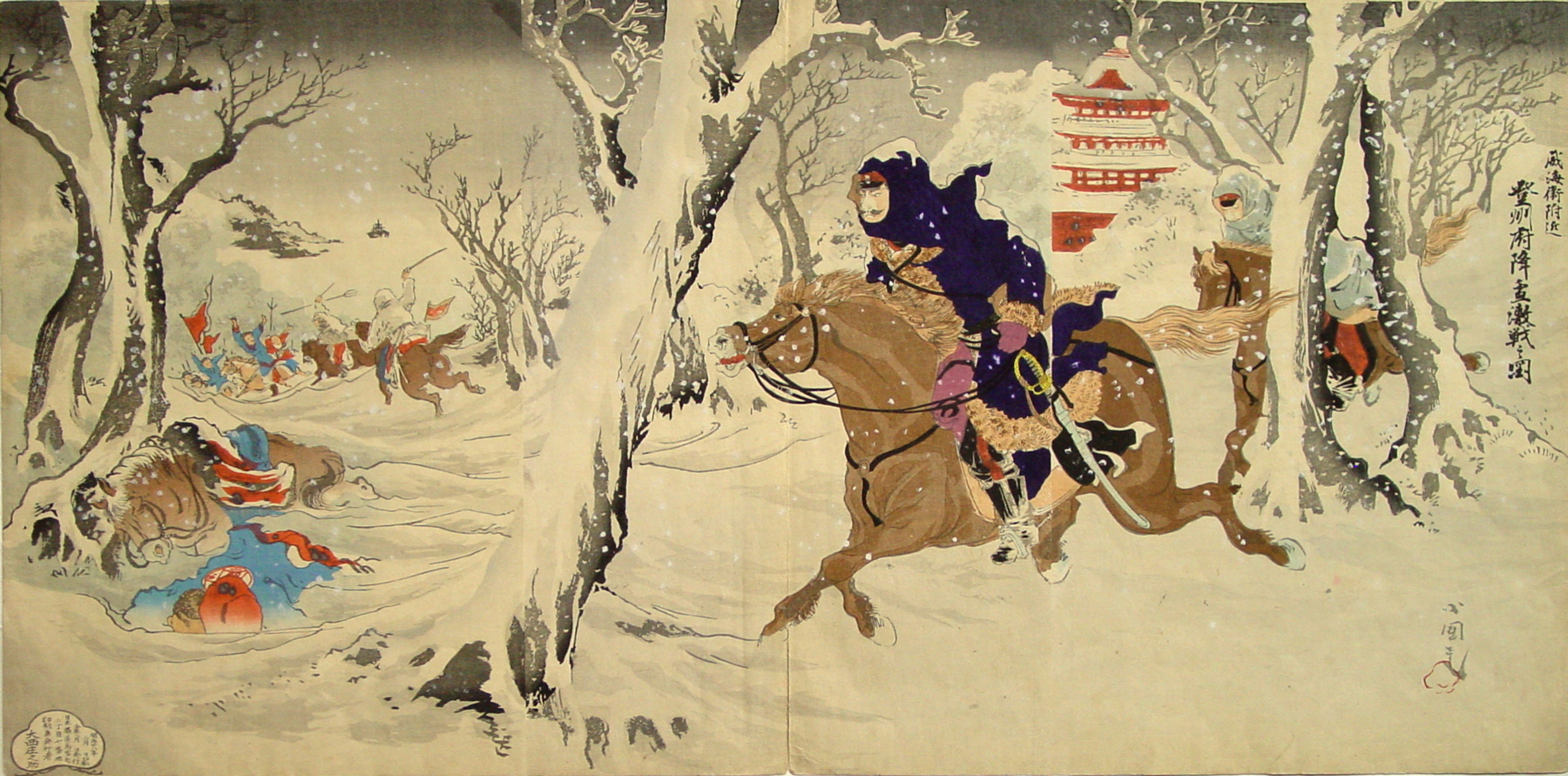About This Print
Source: The Sino-JapaneseWar, Nathan Chaikin, self-published, 1983, p.103.A striking masterpiece about the Wei-Hai-Wei campaign. The bitter cold and the grim determination on the riding officer’s face, well wrapped in his fur-lined overcoat, proved he meant to overrun and chase the fleeing Chinese, as his men are advancing and slaying the enemy right and left. A sense of panic has overtaken the Chinese, while, in the frozen ground, a dead horse and his rider are stiffened into eternity.
Battle of Wei-Hai-Wei
Sources: Wikipedia http://en.wikipedia.org/wiki/Battle_of_Weihaiwei, Fathom http://www.fathom.com/feature/122225/index.html and as footnoted.The Wei-Hai-Wei campaign was very short and is considered the last major campaign of the war. The first men landed on January 20, 1895, on February 12 they received the formal surrender of Chinese Admiral Ting1 and on February 16 they were in possession of all forts and ships. The battle was fought in severe winter cold which developed into an overpowering snow storm on the last day of January and first day of February. Temperatures dropped to minus 26 degrees Celsius.
| The hills encircling the bay formed a gigantic amphitheatre from which the vicissitudes of the struggle could be observed. Military attaches and men-of-war of the principal navies of the world followed with intense curiosity all the operations, and the Japanese, conscious that they were acting before a gallery of nations, determined to display, day after day, all the resources of their skill and daring.2 |
1 Admiral Ting committed suicide shortly thereafter and when the remains of the Admiral passed out of the harbor, the Japanese men-of-war lowered their flags and fired their guns in his honor.
2 The China-Japan War Compiled from Japanese, Chinese, and Foreign Sources, Zenone Volpicelli, William Clowes and Sons, Ltd., London, 1896, p. 302.
Print Details
| IHL Catalog | #90 |
| Title (Description) | Illustration of the Fierce Battle in the Falling Snow at Dengzhou Fu near Wei-Hai-Wei Ikaiei fukin Toshū-fu kōsetsu gekisen no zu 威海衛附近登州府降雪激戦之図 |
| Artist | Utagawa Kokunimasa (1874-1944) |
| Signature |  |
| Seal | stylized seal as shown above |
| Publication Date | February 1895 (Meiji 28) |
| Publisher |  Ōnishi Shōnosuke 大西庄之助 Nihonbashi-ku. [Marks: pub. ref. 420; seal not shown] Ōnishi Shōnosuke 大西庄之助 Nihonbashi-ku. [Marks: pub. ref. 420; seal not shown] |
| Impression | excellent |
| Colors | excellent |
| Condition | good- trimmed into the image, tissue backed, panels joined, center fold center panel (slight separation at edges) |
| Genre | nishiki-e; senso-e |
| Miscellaneous | |
| Format | vertical oban triptych |
| H x W Paper | 14 x 27 3/4 in. (35.6 x 70.5 cm) |
| Literature | The Sino-JapaneseWar, Nathan Chaikin, self-published, 1983, pl.87 |
| Collections This Print | Smithsonian National Museum of Asian Art S2003.8.1386; Museum of Fine Arts, Boston RES.27.161a-c; National Diet Library 寄別8-5-1-2 (part of a bound book of S-J War prints) |
3/30/2020


